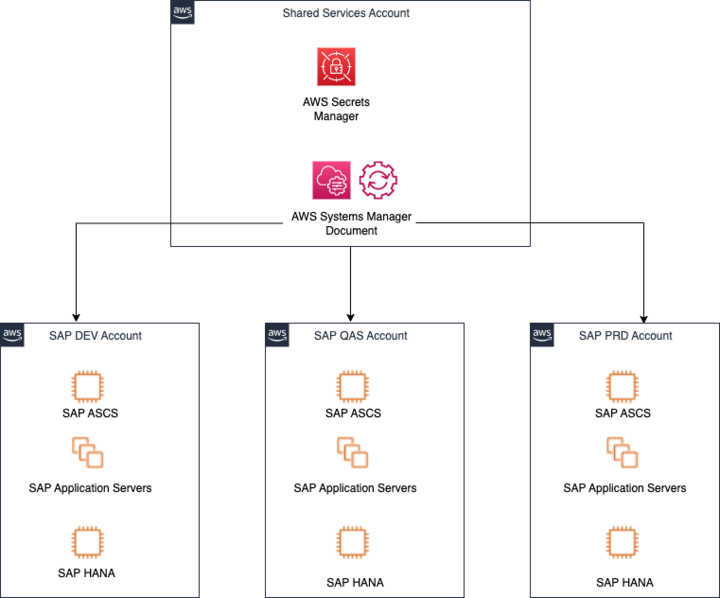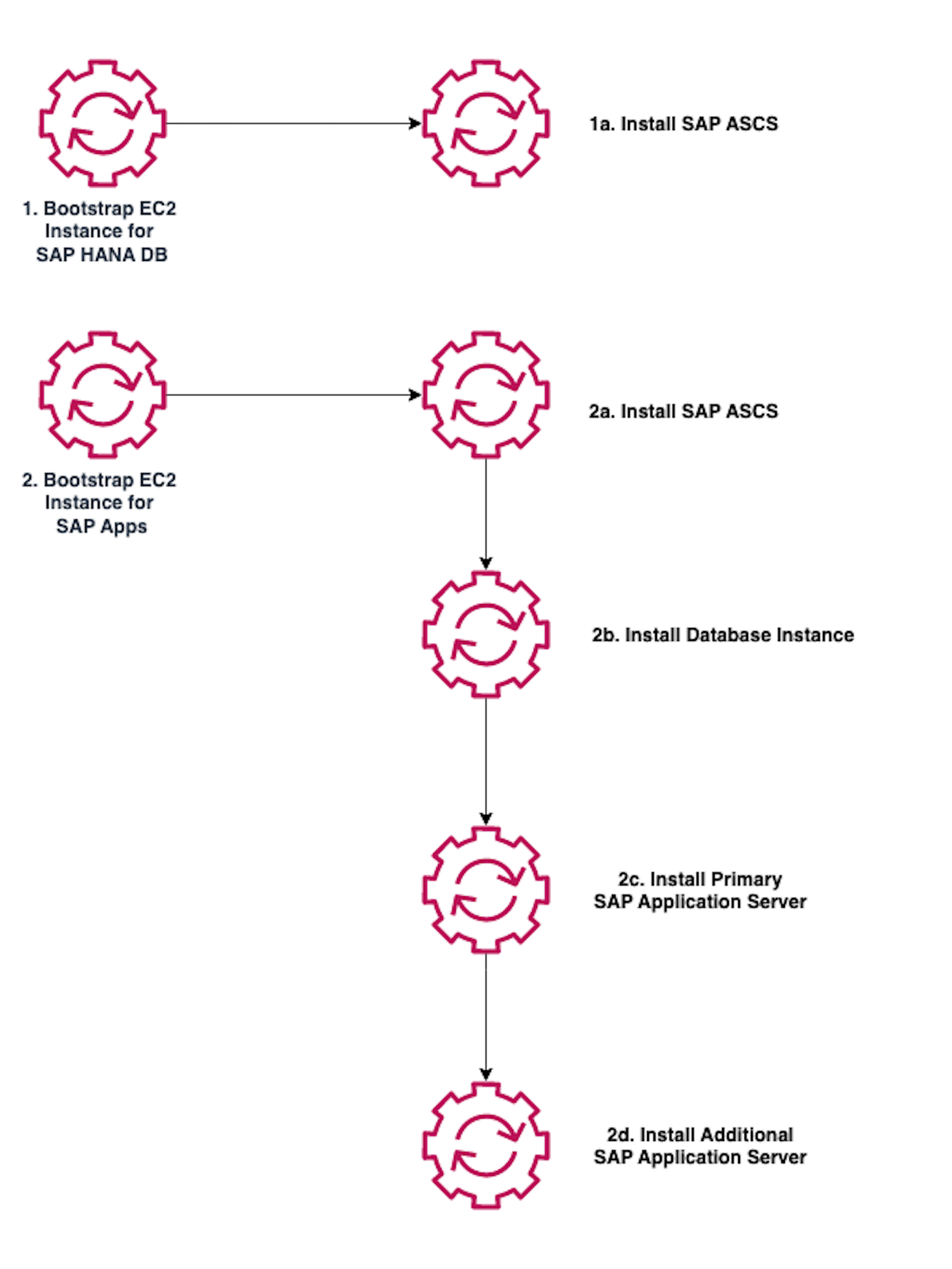Automated SAP installation architecture
The example architecture shown in the diagram below uses a centralized Amazon account that stores the Amazon Systems Manager document (SSM document). The document is shared with Amazon accounts that host Amazon EC2 instances running SAP HANA workloads.

You can use multiple Amazon accounts and Amazon organizations to arrange the accounts into a hierarchy and group them into organizational units. These organizational units can be used for things such as consolidated billing, workload isolation, and administrative isolation. You can create separate Amazon accounts for development, testing, staging, and production on a per-application basis as part of an organization. For more information, see the https://docs.aws.amazon.com/organizations/latest/userguide/orgs_introduction.html Amazon Organizations">User Guide.
Systems Manager automation provides multi-account and multi-Amazon Region support that allows you to execute your own automation documents across multiple accounts from a central Amazon account. You can centralize the SSM documents into a Shared Services account or use an automation account. The automation account can be the Amazon account that runs SAP workloads or a dedicated account that only runs SSM documents. Using a centralized Amazon for automation reduces administration overhead by maintaining the SSM document and its dependencies in a single account. For more information about Shared Services, see Infrastructure OU - Shared Services account in the Amazon Security Reference Architecture.
In order for Systems Manager to trigger automation documents from a centralized Amazon account to the connected accounts, IAM permissions are required in the automation and child accounts. For more information, see Running automations in multiple Amazon Regions and accounts in the Amazon Systems Manager User Guide.
You can share SSM documents privately or publicly with accounts in the same Region. To privately share a document, modify the document permissions and allow specific individuals to access it based on their Amazon account ID. For more information, see Sharing SSM documents in the Amazon Systems Manager User Guide.
Components
The installation automation workflow includes automation runbooks and SSM command documents.
Automation runbook
An automation runbook defines the actions that Systems Manager performs on your managed instances and other Amazon resources. A runbook contains one or more steps that run in sequential order. For more information, see the following documentation:
-
What is an automation? in the Amazon Systems Manager User Guide
SSM command document
If a task must be repeated multiple times on multiple hosts, you can create it as an SSM command document. These documents are usable across multiple runbooks. For more information, see Systems Manager Command document plugin reference in the Amazon Systems Manager User Guide.
You can make the SSM command document as granular as you need, based on factors such as:
-
Segregation of duties
-
Types of SAP systems that are being deployed
-
Complexity of SAP systems that are being deployed
-
Security
Workflow
As an example, each runbook can be made up of several SSM documents that perform a specific configuration. The following runbooks can be used, which are illustrated in the diagram below.
-
Bootstrap Amazon EC2 instances for SAP HANA database
-
Bootstrap Amazon EC2 instances for SAP application servers
-
Install SAP HANA database
-
Install ABAP SAP Central Services (ASCS)
-
Install a database instance
-
Install a primary application server
-
Install an additional application server
